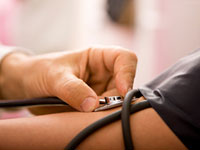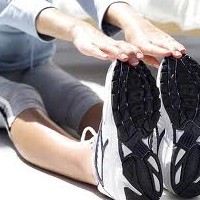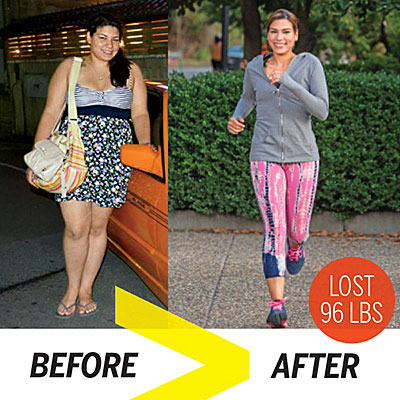
When Heather Lemanski decided it was time to lose some of her 210 pounds, she knew she needed to prepare herself and start slow. “I allowed myself to eat whatever I wanted but stayed around 2,000 calories a day,” she told Health magazine in June 2008. Setting a simple but specific goal paid off; she lost three pounds in the first week. Motivated by her initial loss to stick to the plan, Heather eventually cut her calories to 1,800 a day and built up her exercise routine. After a year of hard work, she had lost 75 pounds.
Being overweight or obese can cause a variety of diseases and conditions, including high cholesterol, high blood pressure, and type 2 diabetes. Before you hit the gym or start cutting calories, have your doctor check your blood pressure and blood cholesterol, triglycerides, and blood sugar levels. He or she will be able to ensure you are ready to start a weight-loss program and may be able to offer tips for easing into a workout regimen. If you have heart problems, a family history of cardiovascular disease, or any joint problems, be sure to ask your doctor if there is any additional testing you may want to consider before beginning an exercise program. Also mention any medications you're taking, as some of them, including antipsychotics, may hinder your ability to lose weight.
Unfortunately, many diets—except for Weight Watchers—don't offer research that proves they actually work at helping people shed pounds and keep them off, according to a review published in the Annals of Internal Medicine in 2005. So, instead of focusing solely on weight loss, try to set goals to improve your overall health. Becoming active and eating healthier are two easy ways to start.
Focus on small, attainable goals that will lead to long-term healthy changes. If you set hard-to-reach goals, failing to achieve them can lead to slipping back into your old habits.
- Write 'em down. Start a food and exercise journal, and be sure to include a list of goals. As you achieve them, be sure to cross them off and add new ones.
- Make your goals specific. Saying you want to "lose weight" won't keep your hand out of the cookie jar. Make a plan to lose two pounds a week or run a mile without stopping by the end of the month.
- Take things one step at a time. Small, incremental goals are easier to meet.
- Focus on overall health. For every weight-loss goal you set (lose 20 pounds, take two inches off your waist), make one for your overall health. Examples include eating fresh food at every meal, lowering your cholesterol, or walking an extra five minutes each day.
- Plan for setbacks. When changing behavior, slip-ups are inevitable. Identify potential roadblocks—a friend's dinner party—and make a plan for staying motivated when these happen.
Tips for setting activity goals:
- Schedule physical activity. Just like you would with any other activity, block out time on your calendar to engage in some sort of exercise. Don't worry if you're busy; just break up your cardio into 10 or 15 minute segments.
- Get a pedometer. Knowing exactly how many steps you take each day can motivate you to be more physically active. Write down your daily step count on a calendar to track your progress, and set incremental goals each week.
- Think outside the gym. Getting exercise can be as simple as walking to the printer every time you print a page, parking your car at the far end of the parking lot, or doing jumping jacks during commercial breaks of your favorite television show.
Tips for setting healthy eating goals:
- Fill up on high-density, low-calorie foods. An easy way is to fill your plate half-full of vegetables, one-quarter full of protein, and one-quarter full of carbohydrates, preferably whole grains. You'll still have a full plate of food, but you'll be filling up on veggies—not french fries or onion rings.
- Throw out the "don't eat" list. Instead of depriving yourself of your favorite foods, try to make lighter versions. If you love hamburgers and french fries, try to make a turkey burger and baked sweet potato wedges. It may not taste exactly the same, but you'll be getting the same flavors for fewer calories.





